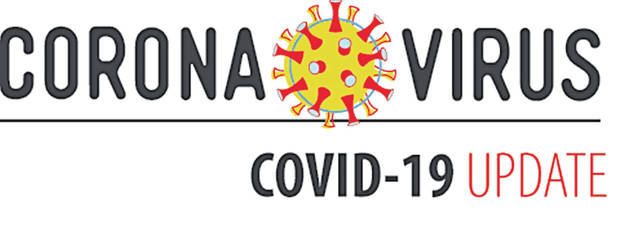
On Tuesday, Fayette County Public Health (FCPH) reported 58 new cases (40 confirmed, 18 probable) of COVID-19 over the past three days with 33 new recoveries (23 confirmed, 10 probable).
FCPH also reported a total of 259 active cases on Tuesday with 18 individuals hospitalized.
Overall, there have been 924 local cases (115 probable and 809 confirmed). Of those 924 cases, 648 have recovered and 91 total have been hospitalized. There have been 17 deaths.
Fayette County remains on a level three (red) emergency on the Ohio Public Health Advisory System (OPHAS), indicating very high exposure and spread of the virus. Follow FCPH on its website, www.faycohd.org/, or Facebook page, “Fayette County Public Health-OHIO” for updated information.
“Due to the rapid increase in disease activity across Ohio, it can take 1-2 days or more for our office to receive a positive lab report from laboratories or healthcare providers,” said a statement from FCPH. “We are asking for your help.
“Please isolate at home immediately if you receive a positive lab result. Please notify anyone you had close contact with from 48 hours before your symptoms began to the time you enter isolation. Close contacts need to quarantine at home for 14 days and monitor for the development of symptoms. Our office will contact you as soon as possible, typically 1-2 days after we receive the lab report.”
State’s first vaccine batch coming soon
Ohio could see its first batches of a coronavirus vaccine by Dec. 15, Gov. Mike DeWine said Tuesday, citing calls his office has had with federal officials.
The Republican governor called the announcement good news even as COVID-19 cases skyrocket in Ohio along with a record number of hospitalizations.
The state’s distribution plan is expected to put a high priority on first responders such as health care workers, nursing home residents, people considered at high-risk for the coronavirus because of medical problems, teachers and school staff members, and others. The governor did not identify which company’s vaccine the state would receive.
The state’s preference is to provide the first vaccine batches to local health departments for initial distribution, according to a draft plan of Ohio’s vaccination plan released last month.
DeWine and health experts continued to urge Ohioans to limit Thanksgiving gatherings. The governor also asked schools moving forward with winter sports to do so without fans.
Nearly 4,500 people are currently in the hospital with COVID-19 symptoms, including more than 1,000 in intensive care units and more than 570 on ventilators, according to state Health Department data.
The seven-day rolling average of daily new cases in Ohio has risen over the past two weeks from 4,724 on Nov. 9 to 8,277 on Nov. 23, according to an Associated Press analysis of data provided by The COVID Tracking Project.
On Monday, DeWine was joined by leaders of the Ohio Hospital Association to discuss the status of hospital capacity and healthcare personnel needs in Ohio as the number of COVID-19 cases continue to surge throughout the state.
As of Monday, Ohio reported 282 new hospitalizations in the last 24 hours. Additionally, Ohio reported 11,885 COVID-19 cases in the last 24 hours. Due to an electronic lab reporting technology issue, information from multiple labs was not processed for two proceeding days and was consequently included in Monday’s report.
“On Thursday, Ohio hospitals had more than 3,800 COVID-19 patients, which was the highest patient count we had seen so far. Today, we are reporting 4,358 COVID-19 hospitalized patients,” said Governor DeWine on Monday. “The virus is quickly spreading throughout our entire state and is dramatically impacting all of our healthcare zones and their ability to care for patients.”
At the beginning of the pandemic, Governor DeWine worked with the Ohio Hospital Association to develop a comprehensive statewide public health system to ensure that all Ohioans have access to quality care during the pandemic. As part of this process, the state was divided into three healthcare zones. Leaders of each zone provided an update on hospital capacity in their regions.
“My biggest concern today is that within the Cleveland Clinic system, alone, we had 970 caregivers out due to coronavirus,” said Robert Wyllie, MD of the Cleveland Clinic. “These caregivers are not catching this in the hospital, but rather in the community. As the community spread increases, so does the number of caregivers who are in quarantine from exposure or who are sick with coronavirus.”
“On November 2, Zone 2 had 400 patients in our hospitals. And not even three weeks later, on November 21, we surpassed over 900 patients,” said Andrew Thomas, MD, MBA, of The Ohio State University Wexner Medical Center. “Until we see cases peak and start to come down in a sustained way, Ohio will continue to see hospitalizations rise.”
“In late September, Zone 3 had 90 hospitalizations. This was at a time when we were opening businesses, and kids were going back to school,” said Richard Lofgren, MD, MPH, FACP, and president and CEO of UC Health. “This really speaks to us because we know how to keep this virus at bay. But, unfortunately this virus is now everywhere.”
The increase in hospitalizations throughout the region has taken a toll on caregivers, as well. Several hospitals in Zone 3 have reported a nursing shortage.
Rural hospitals
Ronda Lehman, PharmD, MBA, FACHE and president of Mercy Health, also discussed the hospital capacity among many rural communities.
“The number of coronavirus patients who require hospitalizations are happening at a faster rate than we are discharging them,” said Lehman. “The ability to discharge patients safely with adequate care, such as providing oxygen or skilled nursing home placement, is also burdened like our hospital systems.”


